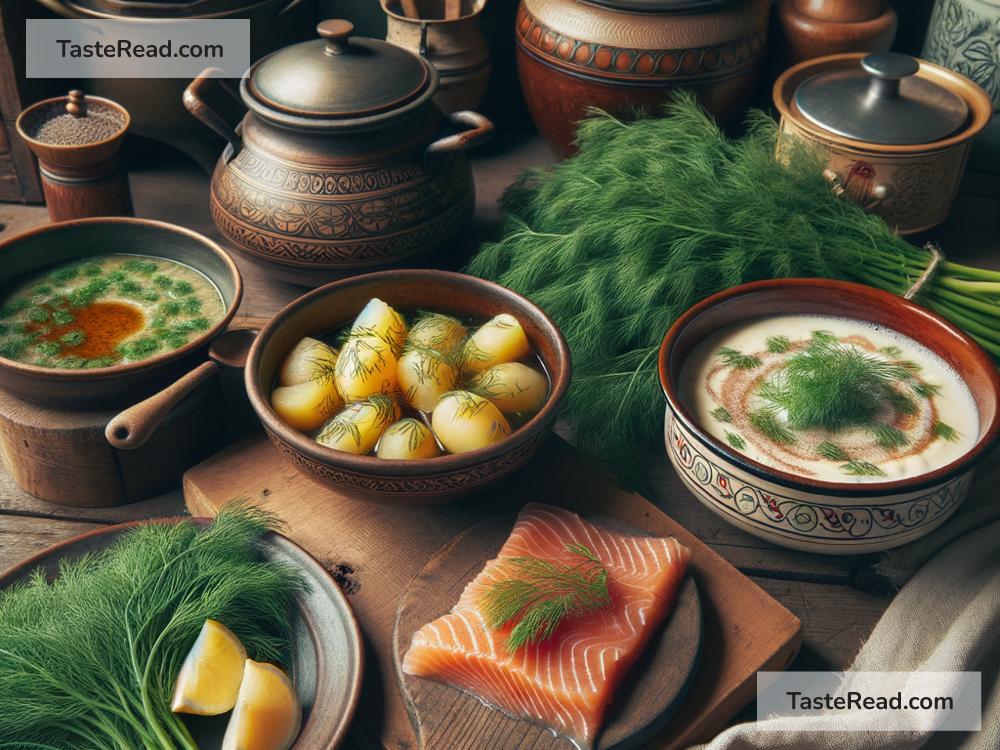The Surprising History of Dill in Scandinavian Cuisine
Dill is one of the most iconic herbs in Scandinavian cooking, adding its fresh and distinct flavor to soups, salads, and seafood dishes that define the region’s culinary traditions. But have you ever wondered how dill became such an essential part of Nordic kitchens? Its fascinating history spans centuries and includes trade routes, cultural exchange, and a deep respect for nature’s bounty. Let’s explore the surprising story of dill in Scandinavian cuisine and see how this humble herb became a star of the Nordic table.
What Is Dill?
Dill is an aromatic herb with feathery green leaves and a subtle flavor that combines sweetness with hints of citrus and spice. It’s used fresh or dried, and even its seeds are an important seasoning in many dishes. Dill pairs wonderfully with fish, potatoes, and a variety of pickled foods—exactly the ingredients that dominate Scandinavian meals.
Though dill is native to regions like the Mediterranean and southern Russia, it’s hard to imagine Scandinavian food without it today. How did it make its way so far north, and why did it become such a staple herb?
Dill’s Journey to Scandinavia
The story of dill in Scandinavia starts thousands of years ago with migrating peoples and ancient trade routes. Dill likely originated in warmer climates, but explorers, traders, and settlers carried it along their journeys. Some historians believe that dill was introduced to northern Europe during the Bronze Age (around 2000 BCE) as part of the exchange of goods, ideas, and agricultural practices.
By the time the Vikings roamed the seas in the late eighth century, dill was already present in Scandinavia. The Vikings were known for their adventurous spirit and active trade networks, which connected them to other parts of Europe and Asia. They brought back spices, herbs, and seeds, including dill, to incorporate into their diets.
Dill’s ability to grow well in cooler climates made it an ideal choice for Scandinavia’s northern landscapes. It thrived during the summer months, when the long days and mild temperatures supported its growth. Scandinavians quickly adopted dill as a versatile ingredient, integrating it into their food traditions.
Dill’s Role in Traditional Scandinavian Cuisine
Scandinavian cuisine is rooted in practicality and preservation. Historically, climates in the region were harsh, forcing people to prioritize foods that could be stored over the winter months. Dill played a major role in flavoring preserved and pickled items—especially fish and vegetables.
One classic use of dill is in gravlax, a Nordic dish of cured salmon. Gravlax is made by rubbing raw salmon with a mixture of salt, sugar, and dill, then letting it cure for several days. This method was developed before refrigeration, and dill’s refreshing flavor helped balance the saltiness of the preserved fish.
Dill is also essential in Scandinavian soups and stews. One beloved example is dillkött, a Swedish dish featuring tender pieces of lamb or veal simmered in a creamy, slightly sour dill sauce. Dill adds brightness to the dish, making it comforting and delicious.
Another famous use of dill is in pickling. Scandinavians have long pickled foods to extend their shelf life, and dill is a key ingredient in pickled cucumbers, onions, and beets. The popularity of dill pickles is still strong today, served alongside sandwiches or as a snack.
Of course, dill isn’t limited to savory recipes. It’s also sprinkled over boiled potatoes, folded into omelets, and stirred into sauces. No matter where you visit in Scandinavia—whether Norway, Sweden, Denmark, Finland, or Iceland—you’re sure to find dill on the menu.
Dill and Scandinavian Summer
In Scandinavian countries, summer is a special time of year. After long and dark winters, people embrace the warm, sunny days with joyful celebrations, such as Midsummer festivals. Dill often plays a starring role in the foods served during these events. Fresh dill is sprinkled over seasonal vegetables, smoked fish, and new potatoes—a simple yet flavorful tradition that highlights the best of summer’s harvest.
Dill’s connection to summer is also practical. The herb grows best during this season, and many families cultivate it in their gardens. Its availability during the warmer months makes dill a fresh and affordable option for home cooks.
A Symbol of Nature and Heritage
For Scandinavians, food isn’t just about sustenance; it is deeply tied to culture, history, and the landscape. Dill embodies these values in many ways. Its simplicity reflects the minimalist and resourceful approach that characterizes Nordic cuisine, while its clean flavor resonates with the Scandinavian love of nature and seasonal ingredients.
What’s remarkable about dill is how it has stood the test of time. It continues to flavor both modern and traditional dishes, reminding Scandinavians of their connection to the past. From ancient trade routes to present-day kitchens, dill has journeyed across history to earn its place in Scandinavian cuisine.
Conclusion
The history of dill in Scandinavian cooking is more than just a tale of culinary preference—it’s a story of adaptation, cultural exchange, and nature’s resilience. This humble herb traveled many miles to reach the Nordic countries, yet it feels perfectly at home in their cuisine. Whether folded into a creamy sauce or paired with pickled herring, dill has become an unmistakable part of Scandinavian identity.
So the next time you enjoy a dish with dill, think about its journey and the role it plays in celebrating both heritage and flavor. It’s more than an herb; it’s a piece of history on your plate!


